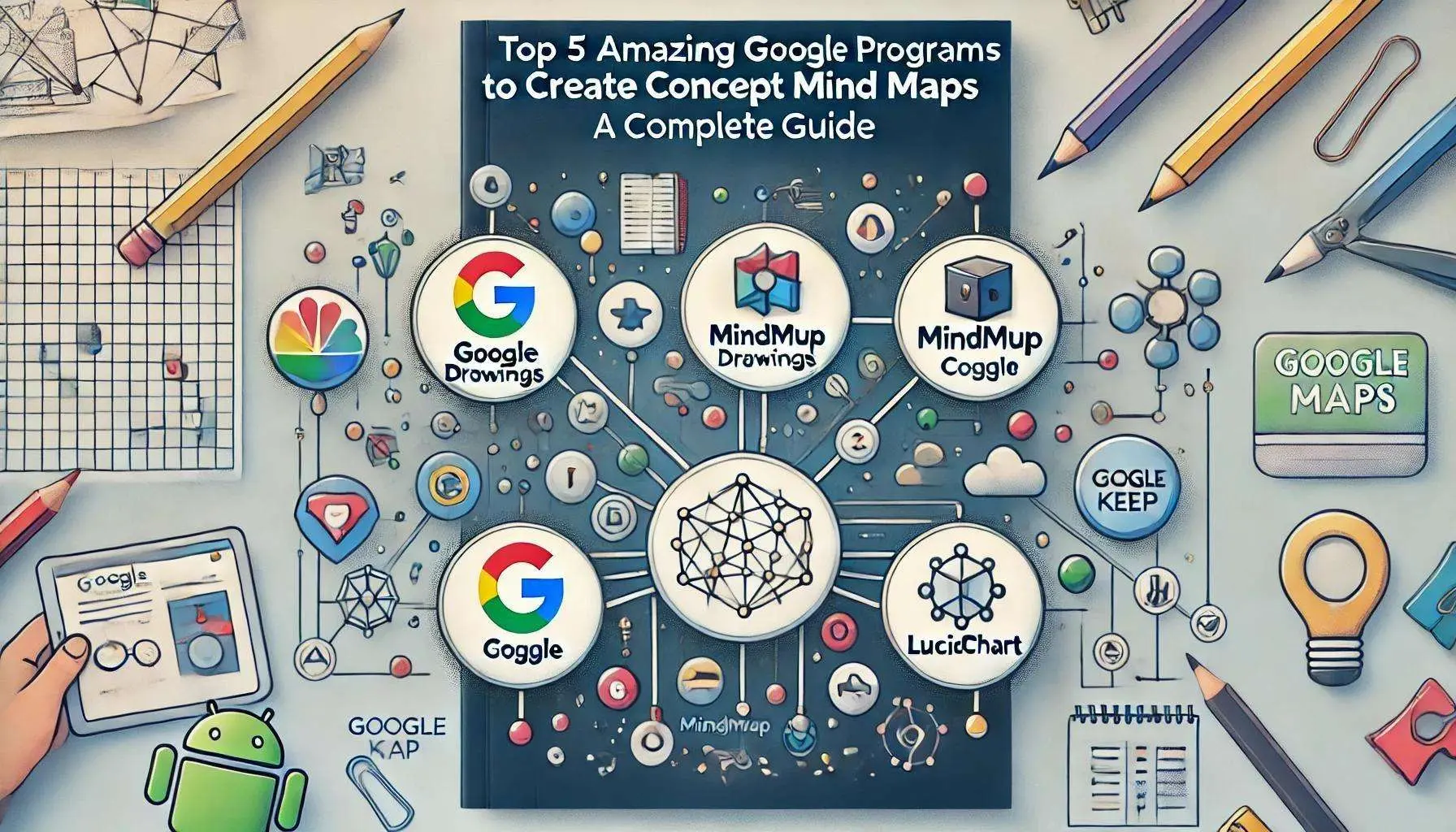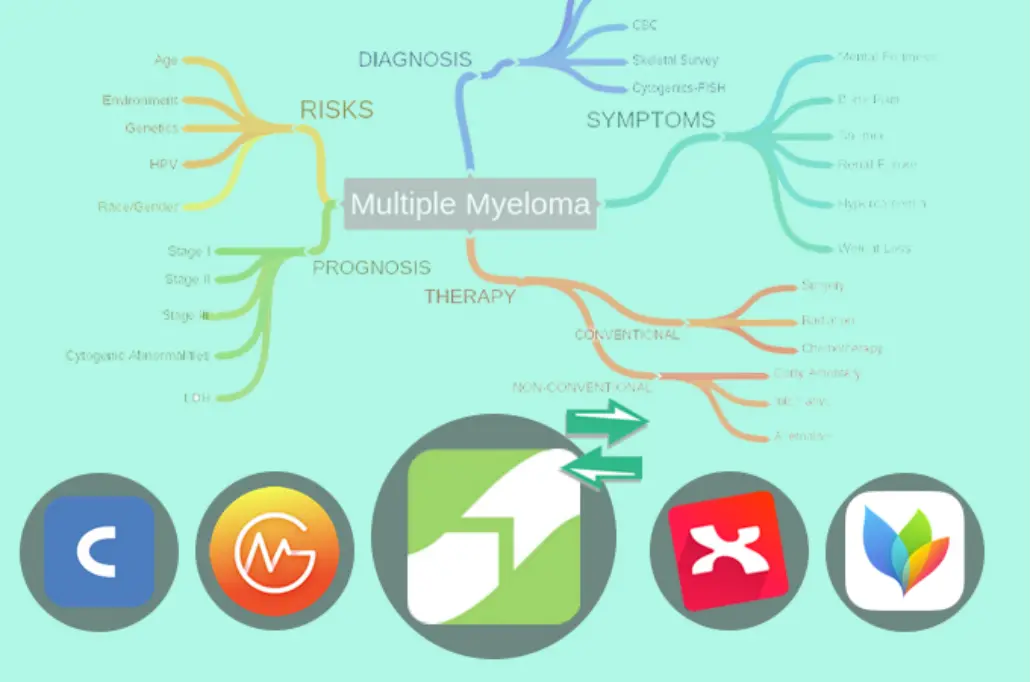In the realm of creativity and productivity, mind maps stand out as a powerful tool. Whether you’re a student, a professional, or simply someone looking to organize thoughts more effectively, understanding mind maps can revolutionize the way you approach tasks. This comprehensive guide delves into what a mind map is, its benefits, and how you can use it to unlock your full potential.
What is a Mind Map?
A mind map is a powerful visual representation of information, designed to reflect the natural workings of the human brain. It begins with a central idea or concept, which is then broken down into related subtopics, radiating outwards in a tree-like structure. Each subtopic can further branch out into more detailed elements, creating a hierarchical and interconnected visual of the subject. This format encourages the free flow of thoughts, promoting a more holistic and integrative understanding of the topic at hand.
Unlike linear notetaking, mind maps enable you to see the relationships and hierarchies between different pieces of information, making it easier to connect ideas and uncover new insights. Mind maps are more than just diagrams, they are cognitive tools that embody the essence of how our brains naturally process information. This method of visual representation organizes data in a way that enhances creativity, memory retention, and comprehension. By leveraging the brain’s associative capabilities, mind maps facilitate a deeper engagement with the material, making it easier to recall and apply the information.
The Origins of Mind Mapping
Mind mapping, as a concept, has roots that stretch back to ancient times. The ancient Greeks are often credited with the early use of similar techniques for memorizing and organizing information. These early forms of visual representation of knowledge were integral to their learning methods, particularly in rhetoric and philosophy. However, it was in the 1970s that mind mapping gained significant popularity, thanks to the efforts of Tony Buzan, a British psychologist, and author. Tony Buzan formalized the method, giving it structure and demonstrating its vast potential across various fields such as education, business, and personal development.
Early Beginnings
The ancient Greeks employed mnemonic techniques to aid in memory and learning. The ‘method of loci,’ for instance, involved visualizing a familiar place and populating it with vivid images representing the information to be remembered. This spatial mnemonic strategy is a precursor to modern mind mapping, emphasizing the power of visual and spatial memory.
Tony Buzan’s Contribution
Tony Buzan took these age-old principles and refined them into what we now know as mind mapping. In his book “The Mind Map Book,” published in 1974, Buzan outlined the structure and benefits of mind maps. He advocated for their use in notetaking, brainstorming, problem-solving, and project planning.
Buzan’s approach emphasized several key principles:
- Central Idea: Start with a central idea or concept, placed at the center of the map.
- Branches: Extend branches from the central idea, each representing a key theme or category.
- Keywords: Use single keywords or short phrases to capture the essence of each branch.
- Images and Colors: Incorporate images, symbols, and colors to enhance memory and engagement.
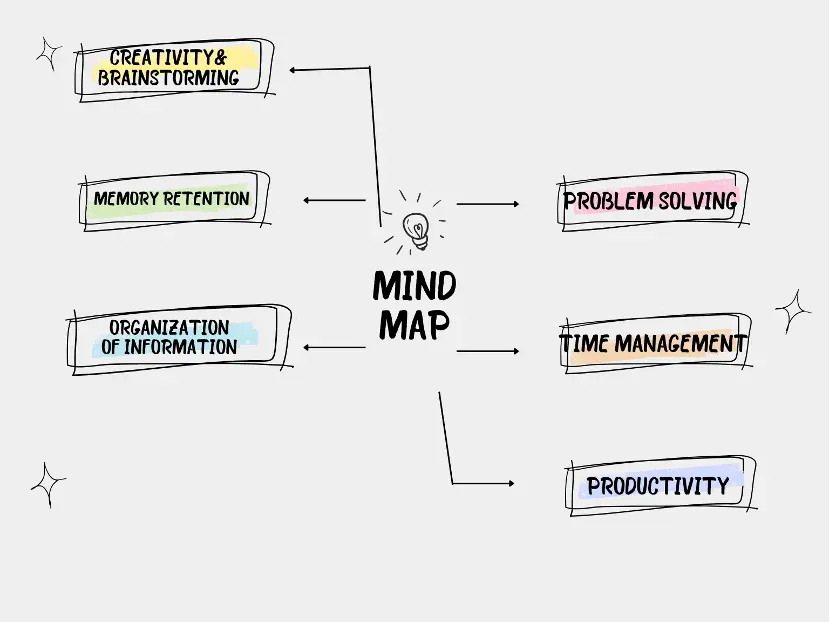
Why Use Mind Maps? The Amazing Benefits
- Enhanced Creativity and Brainstorming
Mind maps encourage free thinking and creativity. By visually mapping out ideas, you can explore connections and relationships that might not be immediately apparent through linear note-taking.
- Improved Memory Retention
The use of images, colors, and keywords in mind maps helps in better memory retention. Our brains are naturally drawn to visual stimuli, making it easier to recall information.
- Efficient Organization of Information
Mind maps allow for the efficient organization of complex information. You can easily see the big picture and the finer details simultaneously, making it easier to understand and manage projects.
- Enhanced Problem Solving
By visualizing problems and their potential solutions, mind maps can help you think more clearly and critically. They provide a platform to explore various angles and approaches.
- Time Management and Productivity
Mind maps can streamline your workflow by breaking down tasks into manageable chunks. This can lead to improved productivity and better time management.
How to Create a Mind Map: A Step-by-Step Guide
Creating a mind map is simple and requires minimal tools. Here’s how you can do it:
- **Start with a Central Idea: ** Begin with your main idea or topic at the center of your page. This could be a problem you need to solve, a project you’re planning, or any other primary focus.
- Add Branches for Subtopics: From the central idea, draw branches to subtopics. These are the main categories or themes related to your central idea.
- **Expand with Details: ** For each subtopic, add more branches with detailed information. This can include keywords, images, or even short phrases.
- **Use Colors and Images: ** Incorporate colors to differentiate between branches and add images to make your mind map more engaging. This will also help in better memory retention.
- **Review and Revise: ** Regularly review and update your mind map. As your understanding of the topic grows, your mind map should evolve to reflect new insights and information.
Practical Applications of Mind Maps
Mind maps can be applied in various areas of life and work. Following are some real-world examples:
- **Education: ** Students can use mind maps to take notes, plan essays, study for exams, and organize research. It makes learning more interactive and effective.
- **Business: ** In the corporate world, mind maps can be used for project management, strategic planning, brainstorming sessions, and presentations. They help in visualizing goals, tasks, and timelines.
- **Personal Development: ** Mind maps can aid in setting personal goals, planning daily activities, and organizing thoughts for self-improvement. They provide a clear path to achieving personal milestones.
- **Writing and Creativity: ** Writers and artists can use mind maps for plotting stories, developing characters, and organizing creative ideas. They offer a dynamic way to explore and structure narratives.
Types of Mind Maps
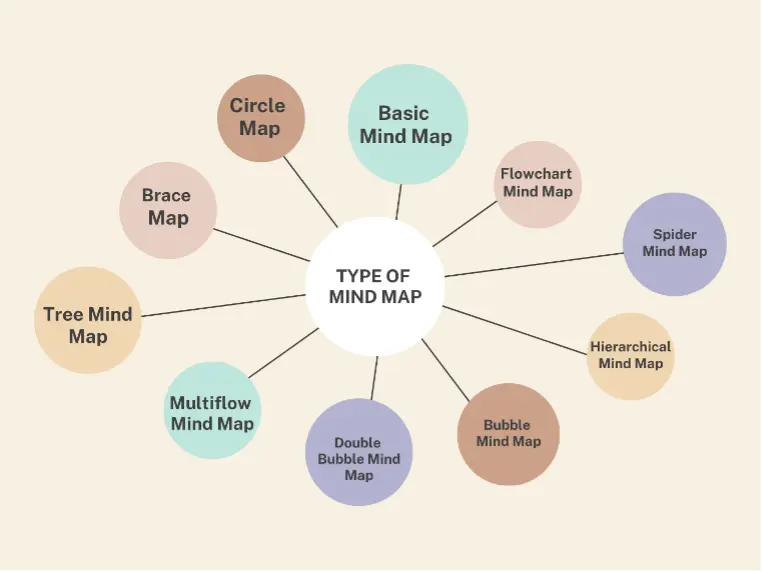
- Basic Mind Map
A basic mind map is the most common form, starting with a central idea and branching out with related concepts. This type of mind map is perfect for brainstorming sessions, summarizing information, and planning projects. It allows you to see the big picture and how different ideas connect.
- Flowchart Mind Map
Flowchart mind maps are ideal for illustrating processes or workflows. They help in visualizing step-by-step sequences and decision points. This type is particularly useful for project management, process documentation, and understanding complex procedures.
- Spider Diagram
A spider diagram is similar to a basic mind map but focuses more on categorizing information into distinct groups. It’s great for exploring the relationships between different categories or themes. This type is often used in education for breaking down topics into subtopics.
- Hierarchical Mind Map
Hierarchical mind maps emphasize the levels of importance and relationships between elements. They start with a main concept at the top and branch downwards in a structured manner. This type is beneficial for organizational charts, strategic planning, and outlining hierarchical structures.
- Bubble Map
Bubble maps are used to describe qualities using adjectives. They are helpful in character analysis, describing attributes, and exploring qualities. This type of mind map is commonly used in educational settings to help students improve their descriptive skills.
- Double Bubble Map
The double bubble map is used for comparing and contrasting two concepts. It’s an excellent tool for identifying similarities and differences, making it useful for critical thinking exercises and decision-making processes.
- Multiflow Map
Multiflow maps are designed to explore cause-and-effect relationships. They help in identifying the root causes of problems and predicting potential outcomes. This type of mind map is ideal for problem-solving, strategic planning, and risk assessment.
- Tree Map
Tree maps are used for classifying and organizing information hierarchically. They start with a broad category and break it down into more specific subcategories. This type is particularly useful for taxonomy, classification tasks, and outlining research papers.
- Brace Map
Brace maps are used for analyzing the parts of a whole. They break down a main concept into its components, making it easier to understand the structure and relationships within the concept. This type is useful for anatomy studies, mechanical parts analysis, and system breakdowns.
- Circle Map
Circle maps are used for defining context and exploring background information. They place the main concept in the center and surround it with related information, providing a comprehensive view of the topic. This type is great for initial brainstorming sessions and gathering background information.
How to Maximize the Power of Mind Maps
To get the most out of mind mapping, consider the following tips:
- **Be Visual: ** Use images, symbols, and colors to make your mind map visually appealing. This not only makes it more engaging but also aids in better memory retention.
- **Keep it Simple: ** While it’s tempting to add lots of information, keep your mind map clear and concise. Focus on key points and avoid clutter.
- **Use Keywords: ** Use single keywords or short phrases instead of long sentences. This helps in keeping the mind map clean and easy to follow.
- Regular Updates: Revisit your mind maps regularly and update them as needed. This ensures that they remain relevant and useful.
Mind maps are an amazing and powerful tool that can enhance creativity, improve memory retention, and boost productivity. By understanding what a mind map is and how to create one, you can unlock new ways of thinking and organizing information. Whether for personal use, education, or business, mind maps offer a versatile solution to complex problems and tasks. Start mind mapping today and experience the transformative power of this incredible tool!
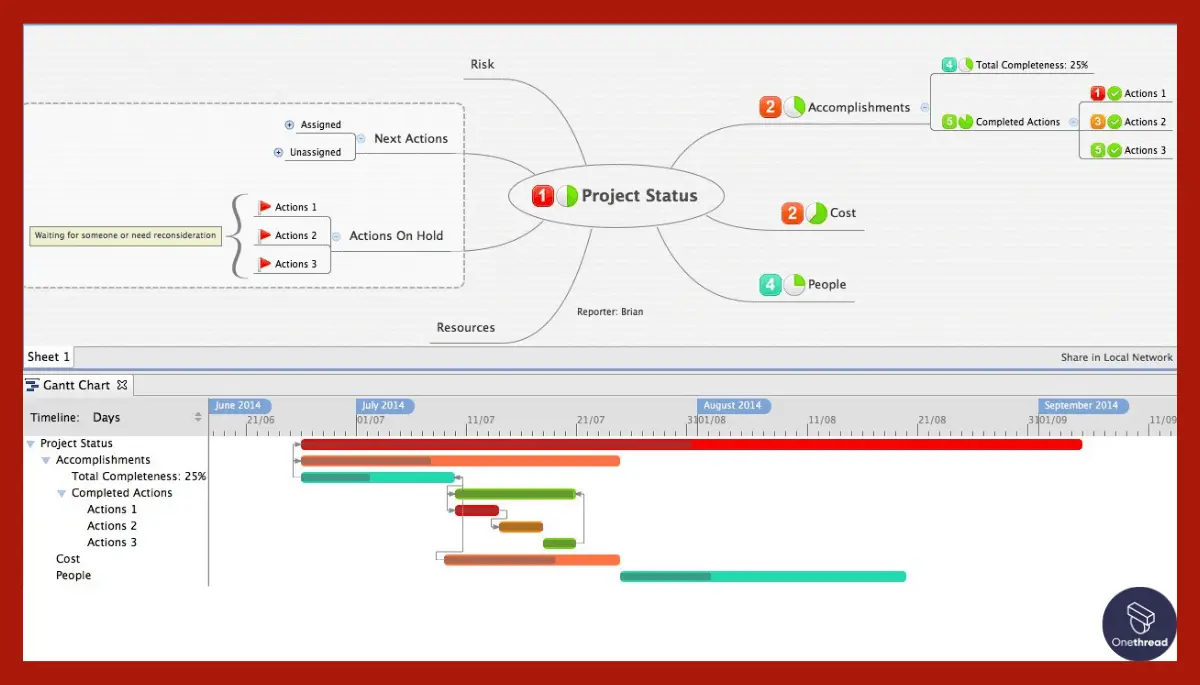

![[What is a Mind Map?] The Ultimate Guide to This Amazing Tool](/_astro/32123.meOfH-Kj_CbgQN.webp)


